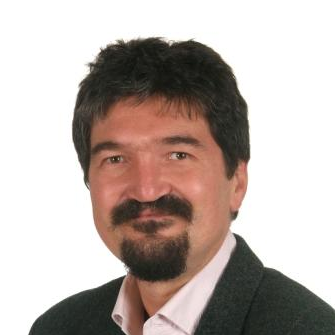Smart Antenna Optimization Techniques for Wireless Applications
A special issue of Electronics (ISSN 2079-9292). This special issue belongs to the section "Networks".
Deadline for manuscript submissions: closed (20 April 2023) | Viewed by 19848
Special Issue Editors
Interests: smart antennas; signal and speech processing; RF and microwave systems; Ad-Hoc networks; emerging issues in 3G and 4G Networks; MEMS, wireless sensor networks; electromagnetic interference & compatibility; wireless communication; optical and mobile communication; satellite communication; radio engineering; signal processing; signals and systems; digital signal processing; digital image processing; wireless networks; cognitive radio design; wavelets and applications; MIMO Systems; embedded system
Interests: soft computing techniques; smart antenna
Interests: multimedia and multimodal interactive environments; mulsemedia applications and environments; adaptive, cross-layer communication systems; human-centred e-systems; mobile and pervasive computing; communications security
Special Issues, Collections and Topics in MDPI journals
Special Issue Information
Dear colleagues,
In recent years, antenna design has received a lot of attention. This is due to a surge in interest in a variety of applications, ranging from IoT to low-frequency, long-range applications to high-frequency mmWave 5G mobile technology. Wearable antennas that build body area networks have also sparked interest. Wearable clothes and materials that adhere directly to the skin, such as e-skin, are examples of this. The supply of even larger data rates to mobile customers, the delivery of zero-latency multimedia content, and the connectivity of diverse services are all intimately linked on the path to designing and implementing next-generation broadband wireless networks. The goal is to create a cellular network environment in which sensors, appliances, automobiles, and drones may interact with one another. The cellular network's capacity must be considerably increased in order to support such interactions. The notion of 5G, a new generation of mobile wireless technology that offers multi-gigabit-per-second data rates with a higher capacity and lower latency than today's wireless systems, was recently announced by the wireless communications industry. Future phones and base stations will need multimode antenna technology that is both energy-efficient and can function in the millimeter wave band in conjunction with legacy 4G and sub-6 GHz 5G. Antennas should be small in size, but they must meet technical criteria, such as a greater power, wider bandwidth, higher gain, and insensitivity to human users' hand-held influence. The usage of the millimeter wave band, which will provide a network of tiny cells enabling high-capacity and area-efficient hotspot zones, is critical to 5G. The next 5G system will be a true mobile multimedia communication platform, including not just legacy heterogeneous mobile networks but also sophisticated radio interfaces and the ability to operate at millimeter wave frequencies to make use of the vast amount of available capacity. This will impose stringent design standards that go beyond the most recent 5G rollout in the sub-6GHz range.
This Special Issue aims to shed light on recent breakthroughs in antenna design for these new developing applications, as well as highlight more study possibilities in this fascinating field of communications technology. We encourage scholars and practicing engineers to submit original research papers that address:
- Multibeam antenna technologies for 5G wireless communications;
- Millimeter wave (mmWave) and THz antennas for 5G wireless communications;
- Propagation models at mmWave and THz bands;
- Compact antenna arrays for massive MIMO systems;
- mmWave and large-scale MIMO channel models;
- Antennas for implantable systems and IoT applications;
- Advanced antennas and transceivers for full-duplex communication;
- Distributed antenna systems for 5G multiuser networks;
- mmWave and THz cooperative relays for coverage extension;
- Antenna design for Internet of Things;
- Beamforming and smart antennas for 5G;
- Antenna design for wearable applications;
- Antenna design for body area networks;
- Antenna design for Chipless RFID;
- Metamaterial-based antennas;
- Smart antennas, beamforming and MIMO;
- Aeronautical and space applications;
- Antenna design for CubeSat;
- Antenna design for deep space communication
- Antenna design for biomedical systems and applications;
- Implanted antennas;
- UWB and multispectral technologies and systems;
- mmWave and THz antennas;
- Multiple antennas for advanced 5G transceivers;
- Multiband 5G antenna;
- 5G Dielectric Resonator antennas;
- Antennas on flexible substrates for medical applications;
- Antennas for wireless power transmission and harvesting;
- RFID antennas;
- Reconfigurable antennas and devices;
- Mutual coupling and isolation techniques between antenna elements;
- UWB antennas.
Dr. Kannadhasan Suriyan
Prof. Dr. R. Nagarajan
Prof. Dr. George Ghinea
Guest Editors
Manuscript Submission Information
Manuscripts should be submitted online at www.mdpi.com by registering and logging in to this website. Once you are registered, click here to go to the submission form. Manuscripts can be submitted until the deadline. All submissions that pass pre-check are peer-reviewed. Accepted papers will be published continuously in the journal (as soon as accepted) and will be listed together on the special issue website. Research articles, review articles as well as short communications are invited. For planned papers, a title and short abstract (about 100 words) can be sent to the Editorial Office for announcement on this website.
Submitted manuscripts should not have been published previously, nor be under consideration for publication elsewhere (except conference proceedings papers). All manuscripts are thoroughly refereed through a single-blind peer-review process. A guide for authors and other relevant information for submission of manuscripts is available on the Instructions for Authors page. Electronics is an international peer-reviewed open access semimonthly journal published by MDPI.
Please visit the Instructions for Authors page before submitting a manuscript. The Article Processing Charge (APC) for publication in this open access journal is 2400 CHF (Swiss Francs). Submitted papers should be well formatted and use good English. Authors may use MDPI's English editing service prior to publication or during author revisions.
Keywords
- metamaterials
- optical antenna
- smart antenna
- millimeter waves
- UWB, reconfigurable devices
- biomedical antenna
- optimization
- 5G, 6G and antenna wave propagation







